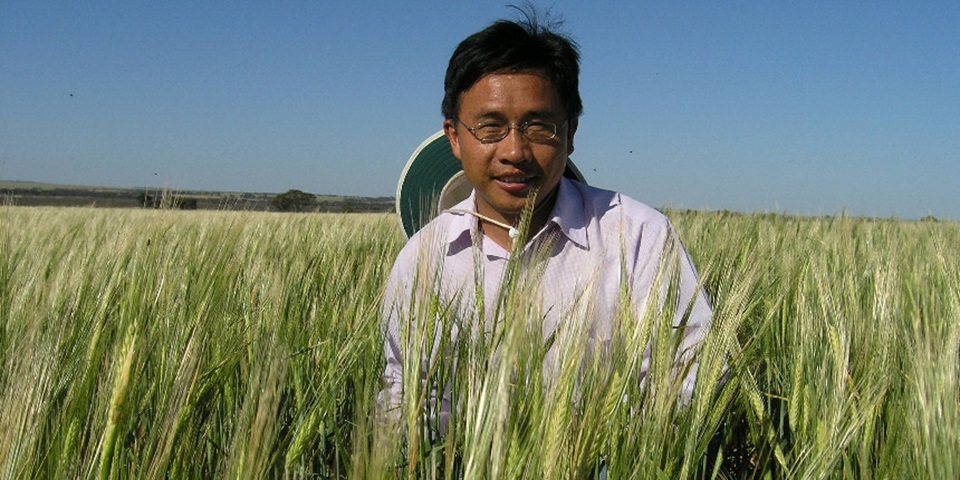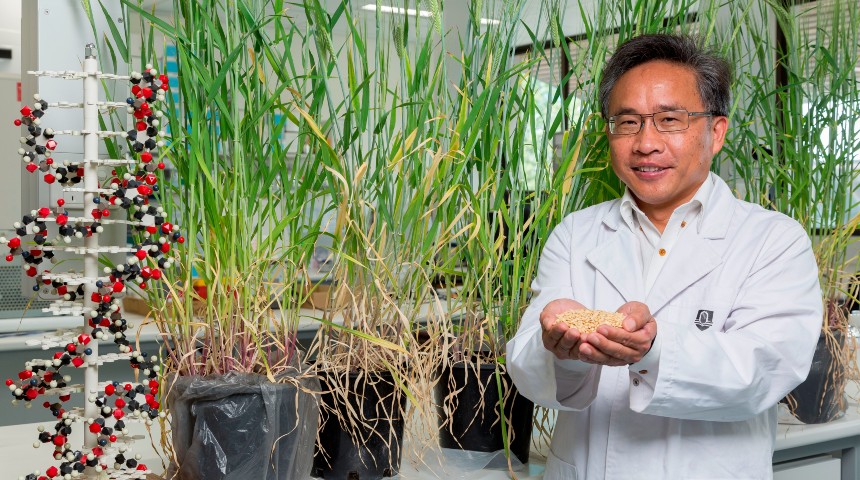Return to Our Story page
News
Unique fingerprints of crops hold key to barley yield

Food security is a complex and pressing global issue, but Murdoch University experts have taken the challenge in their stride.
Barley, a major cereal grain, is a crucial food source – and an increased reliance on grain-based foods and grain-fed meat has made understanding how the grain thrives paramount.
Australia is a dominant presence in the world barley market, representing around 40 per cent of the international malting barley trade. Western Australia produces close to half of that.
In 2015, the Department of Agriculture and Food, Western Australia (DAFWA) and Murdoch University formed the Western Barley Genetic Alliance (WBGA), in order to combine expertise and co-invest in barley genetics research.
The focus of this research was barley yield and adaptation, quality and reducing overall risk to growers.
With the launch of WBGA, Murdoch University announced it would fund up to 10 new PhD scholarships in barley genetics and two new postdoctoral fellowships.
Cracking the barley code
In 2017, the alliance was part of research which mapped the complete barley genome – with WA researchers among the group which mapped two of the seven barley chromosomes.
Murdoch University’s Food Future Institute Professor Chengdao Li, director of WBGA, said the barley genome map pinpointed genetic information that could develop molecular markers and genomic breeding tools for future barley enhancement.
Mapping the barley genome effectively provides a ‘dictionary’ from which genetic ‘words’ and ‘sentences’ can be produced that identify the genes that control traits such as yield, adaptation to climate, quality and pest and disease tolerance.
Professor Chengdao Li

Professor Li added that cereal crops including bread wheat, durum, barley and rye had some of the most complex genetic histories of the world’s cultivated species, making this research particularly groundbreaking.
“Barley is the first crop in this tribe to be sequenced in such detail. To put the research into perspective, the barley genome is twelve times larger than the rice genome and more complex.”
The WBGA then further cracked the barley genetic code to develop a barley variety identification test, which uses DNA fingerprinting technology to determine the identity and purity of Australian barleys.
This was particularly game-changing for growers, leading to better informed practices of crop cultivation.
“There was a case where a grower planted a crop of what he thought was Clearfield barley, which has herbicide tolerance, and they lost the lot when it was sprayed as it turned out it was not the variety they thought it was,” Professor Li said.
WBGA’s work didn’t stop there, and the team would continue to deliver findings that underpinned breeding projects of new grains helping to secure supply into the future that would adapt to frost, drought and climate change.
The climate resilient gene
In 2020, the Western Crop Genetics Alliance was formed as an expansion of WBGA with Murdoch University and the Department of Primary Industries and Regional Development (DPIRD).
This team played an integral role in identifying a new semidwarf gene to breed barley climate resilient crops.
Professor Li said climate change has threatened crop variety sustainability based on the ‘green revolution’ of the 1960s and ‘70s, which was based around ‘dwarfing’ gene mutations that led to shorter stems.
Through collaboration with University of Tasmania and Chinese Academy of Agricultural Science, the research revealed an urgent need for plant breeders to select short-statured barley cultivars with enhanced early emergence characteristics to counteract the climate change impacts on grain production.
“The new semidwarf gene was identified with moderate reduction of plant height, and the gene can increase coleoptile length, therefore overcoming the weakness of traditional green revolution genes,” Professor Li said.
“Diagnostic molecular markers are available for breeders to fast-track breeding new varieties to carry the new semidwarf gene. CRISPR/CAS gene editing technologies have precisely created multiple desired types to achieve high grain yield potential at different environments.”
These findings, along with the constant stream of critical research stemming from the Food Futures Institute and industry partners are and continue to be important building blocks in establishing food security for years to come.
